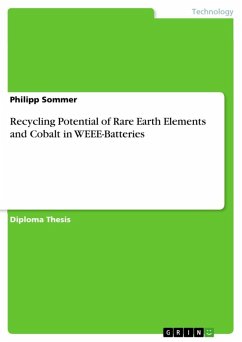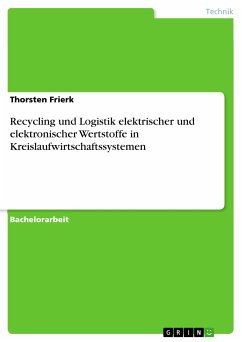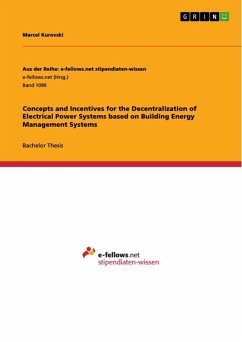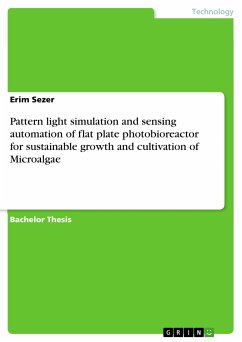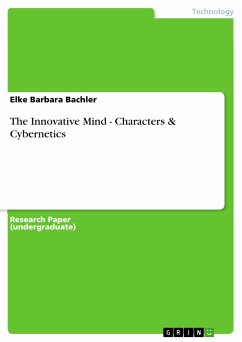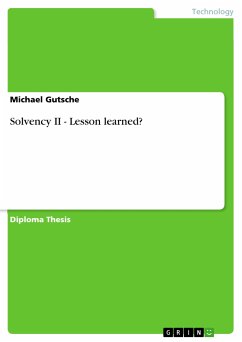Diploma Thesis from the year 2013 in the subject Engineering - Industrial Engineering and Management, grade: 1,0, Technical University of Berlin (Institut für Technischen Umweltschutz - Fachgebiet Abfallwirtschaft), language: English, abstract: [...] Since the majority of Li-ion and NiCd batteries and a large amount of NiMH batteries is disposed of along with the devices they were employed in as energy sources, a huge potential of REE and cobalt is inherent in waste electrical and electronic equipment (WEEE). This thesis inquires about the role of REE and cobalt in WEEE-batteries and assesses the total contained quantities and the actual recovered quantities of REE and cobalt contained in WEEE-batteries. Thereby, the investigation focused on WEEE-batteries of a group of selected equipment types which did arise as waste from the German consumer sector in 2011. For the investigation, a calculation model was developed and furnished by data acquired through literature and market research, plant visits, expert interviews and experimental surveys. The results show that from a theoretical recycling potential of 41.7 ± 7.2 tons of REE in WEEE-batteries, no REE are currently recovered in the sense of a functional recycling. Of the 364.3 ± 63.7 tons of cobalt contained in WEEE-batteries, only 47.8 ± 13.7 tons were separately recovered. The low collection rate of battery powered WEEE was identified as a main causal factor. To increase the collected amount of WEEE-batteries [...]
Dieser Download kann aus rechtlichen Gründen nur mit Rechnungsadresse in A, B, BG, CY, CZ, D, DK, EW, E, FIN, F, GR, HR, H, IRL, I, LT, L, LR, M, NL, PL, P, R, S, SLO, SK ausgeliefert werden.

